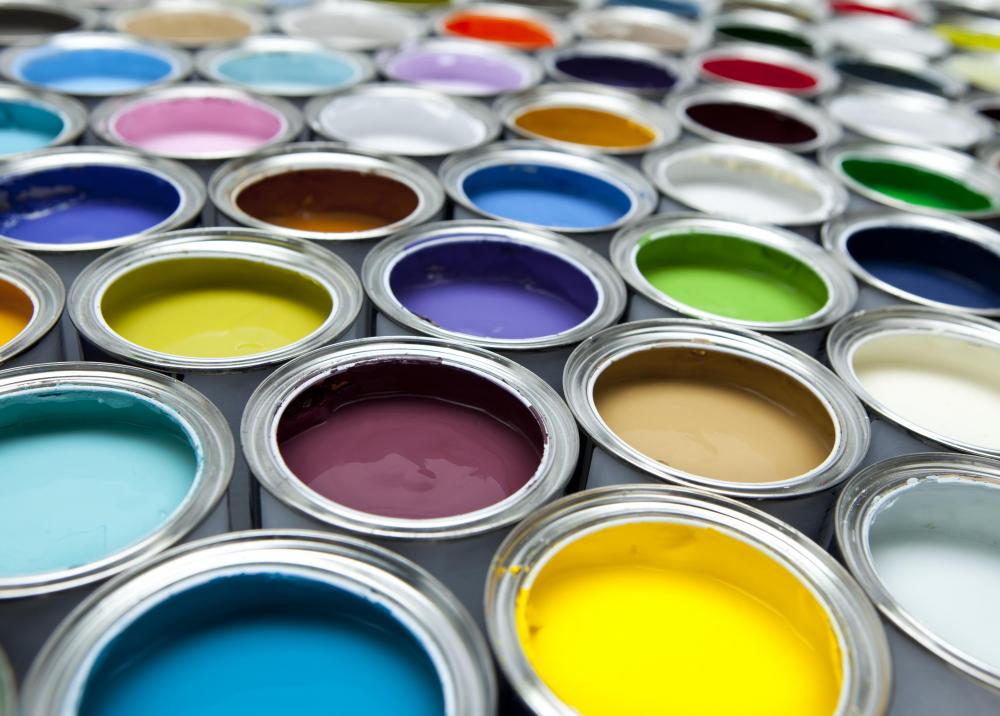At HomeQuestionsAnswered, we're committed to delivering accurate, trustworthy information. Our expert-authored content is rigorously fact-checked and sourced from credible authorities. Discover how we uphold the highest standards in providing you with reliable knowledge.
How do I Choose the Best Stucco Paint?
When looking for the best stucco paint, you first need to understand the type of stucco you have and its current condition. Brand new concrete stucco can easily be painted with acrylic paints, where new fiber cement stucco is usually already painted or at least primed to be painted. If you have old stucco with more pits and cracks, then elastomeric paints are usually recommended.
A house with brand new concrete stucco will only need a high-grade exterior acrylic paint. Acrylic will bond very closely to the stucco and should last several years if the stucco is properly primed. Layering two coats of exterior paint will help protect it from weather conditions. Using primer will protect the bare stucco and let the paint adhere to the wall better. The more modern fiber stucco panels, however, generally come pre-primed and ready to paint right away.

Houses with old stucco may have the unique problem of deep pits and cracks in the stucco itself. Rather than completely redoing the stucco, elastomeric paint may be used to fill in the blemishes. This is paint made to create a slightly stretchy film over the stucco surface. After using primer on the surface, applying two layers of elastomeric paint may sufficiently fill in pits and small cracks and protect the stucco from further damage. For this reason, elastomeric paint is considered the best stucco paint for older homes.

The exterior paint used should be fairly thick and lay heavy on the stucco. This is because the texture of stucco makes it a bit difficult to completely cover, so you will usually want paint which will fill in the valleys as well as cover the ridges of the stucco. The best stucco paint will also have a slightly more saturated color than you ultimately want, because weather conditions may lighten it quickly. All-season exterior paint is also important so the paint can withstand extreme heat, cold and moisture variations.

When looking for the best stucco paint, it usually helps to speak with a paint specialist about your needs. Letting the specialist know the kind of stucco you have, its age and condition will help him or her give you advice on what type of paint to use. Using the right paint goes a long way in its longevity, which is important if you don’t want to be repainting often. Choosing the wrong paint could mean you will have to strip and repaint as early as one year later.
AS FEATURED ON:
AS FEATURED ON:













Discussion Comments
If your stucco is quite old, I would make absolutely sure that you've done all the stucco repair that you need to do before painting it.
Painting is so expensive these days, even if you try every trick to get cheaper paint, and you don't want to have your paint look shabby after only a couple of years because your stucco needed some work before you put the paint on.
Better to get it all done up front so you can forget about it for a long time.
@Mor - It depends on the house really, and on the people inside it as well. I mean, if you spend a lot of time outside the house, in the backyard maybe, or gardening, or whatever, it could really be worth thinking hard, or getting an expert in, to help you decide on colors.
There's a lot to think about. White seems like the ideal color, but if you're living in a cold area, a darker color might be better. And, if you're living in a hot area, a color that will reflect the sun without making the garden too hot might be ideal.
You might also want a particular color to go with the natural local landscapes, or something contemporary or whatever. It's not something you should take for granted or just decide on a whim.
It might be worth getting a color specialist in to have a look at your house and help you decide on a color scheme. I was a bit skeptical about this because it seems like a waste of money, but my mother recently had one in and now that they've repainted, taking her suggestions, the house looks so much brighter and more spacious, it's pretty incredible.
The paint colors you use on the outside might not make all that much difference though, so I suppose it's up to the individual person.
Post your comments